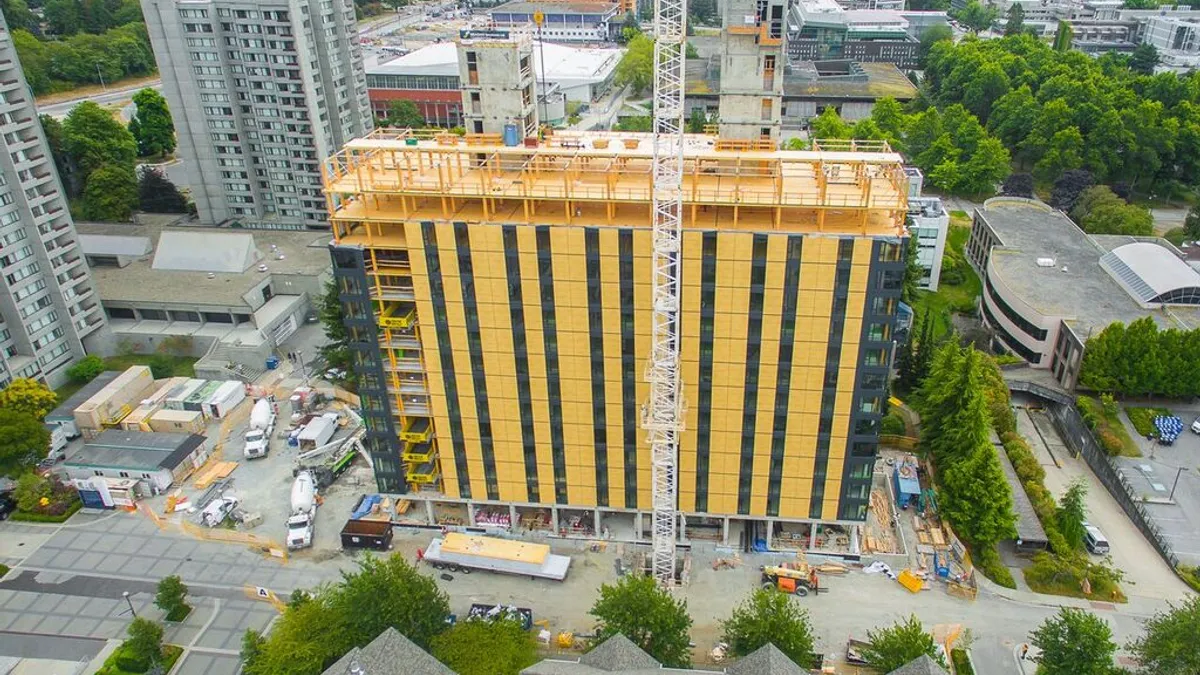Dive Brief:
- With its skeleton and facade topped out, the University of British Columbia's 18-story, $39-million Brock Commons residence hall is the world's latest — and tallest — wood-framed building to rise, according to Architect Magazine.
- The tower, which was designed by Vancouver, British Columbia-based Acton Ostry Architects and will house more than 400 students when it is complete in September 2017, also incorporates a concrete foundation, two concrete stair cores, steel connectors and a steel-beam-and-decking roof. Completion of the timber portion of the building took 70 days from the time the prefabricated wood components were delivered to the site (see video here).
- Officials at the Vancouver-based university said the building's carbon footprint reduction has the same effect as removing 500 cars from use for one year. They also announced that they will pursue LEED Gold certification from the U.S. Green Building Council for the new tower. It will be the sixth wood building on campus.
Dive Insight:
UBC officials said that in addition to the building serving as a "living laboratory" for university researchers, it should also give a boost to British Columbia's — and Canada's — wood products industry by showing off its potential in a variety of applications. To that end, Natural Resources Canada, the Province of British Columbia, and the Binational Softwood Lumber Council contributed to the building's construction fund. There are tentative plans underway for taller wood buildings in Stockholm and in London's Barbican Estate housing complex, but those projects have yet to be realized.
And while wood is proving itself to be a viable alternative to concrete and steel, American wood advocates took a hit recently when officials in Sandy Springs, GA, decided to ban wood-framed buildings taller than three stories and larger than 100,000 square feet. Experts disagree as to whether local building authorities were justified in their decision, with the pro-noncombustible side saying that steel and concrete are logically the most durable and safe choice, while proponents of wood asserted the material's sustainability and longevity.
The material at the center of most tall wood building design is cross-laminated timber, which is an engineered wood product that mimics the fire-resistance of heavy timber. The American Wood Council says that CLT is renewable and sustainable, primarily because it reduces a building's carbon footprint by storing carbon absorbed during a tree's growing cycle. The U.S. Department of Agriculture has attempted to bolster the industry by sponsoring the U.S. Wood Tall Building Competition. The two winning teams, from New York City and Portland, OR, each won $1.5 million to develop their high-rise wood projects.














